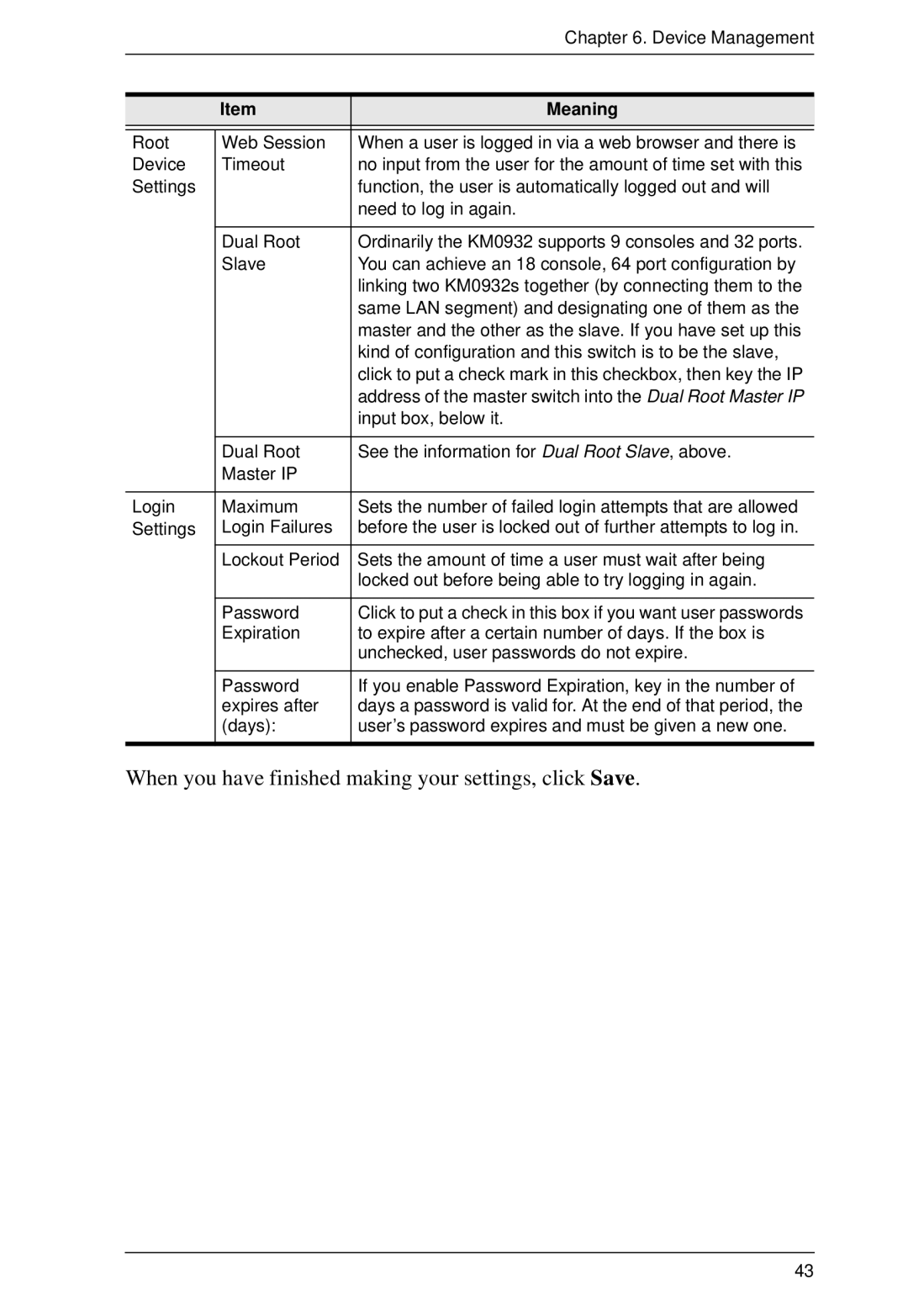|
| Chapter 6. Device Management |
|
|
|
|
|
|
|
|
|
| Item | Meaning |
|
|
|
Root | Web Session | When a user is logged in via a web browser and there is |
Device | Timeout | no input from the user for the amount of time set with this |
Settings |
| function, the user is automatically logged out and will |
|
| need to log in again. |
|
|
|
| Dual Root | Ordinarily the KM0932 supports 9 consoles and 32 ports. |
| Slave | You can achieve an 18 console, 64 port configuration by |
|
| linking two KM0932s together (by connecting them to the |
|
| same LAN segment) and designating one of them as the |
|
| master and the other as the slave. If you have set up this |
|
| kind of configuration and this switch is to be the slave, |
|
| click to put a check mark in this checkbox, then key the IP |
|
| address of the master switch into the Dual Root Master IP |
|
| input box, below it. |
|
|
|
| Dual Root | See the information for Dual Root Slave, above. |
| Master IP |
|
|
|
|
Login | Maximum | Sets the number of failed login attempts that are allowed |
Settings | Login Failures | before the user is locked out of further attempts to log in. |
|
|
|
| Lockout Period | Sets the amount of time a user must wait after being |
|
| locked out before being able to try logging in again. |
|
|
|
| Password | Click to put a check in this box if you want user passwords |
| Expiration | to expire after a certain number of days. If the box is |
|
| unchecked, user passwords do not expire. |
|
|
|
| Password | If you enable Password Expiration, key in the number of |
| expires after | days a password is valid for. At the end of that period, the |
| (days): | user’s password expires and must be given a new one. |
|
|
|
When you have finished making your settings, click Save.
43
